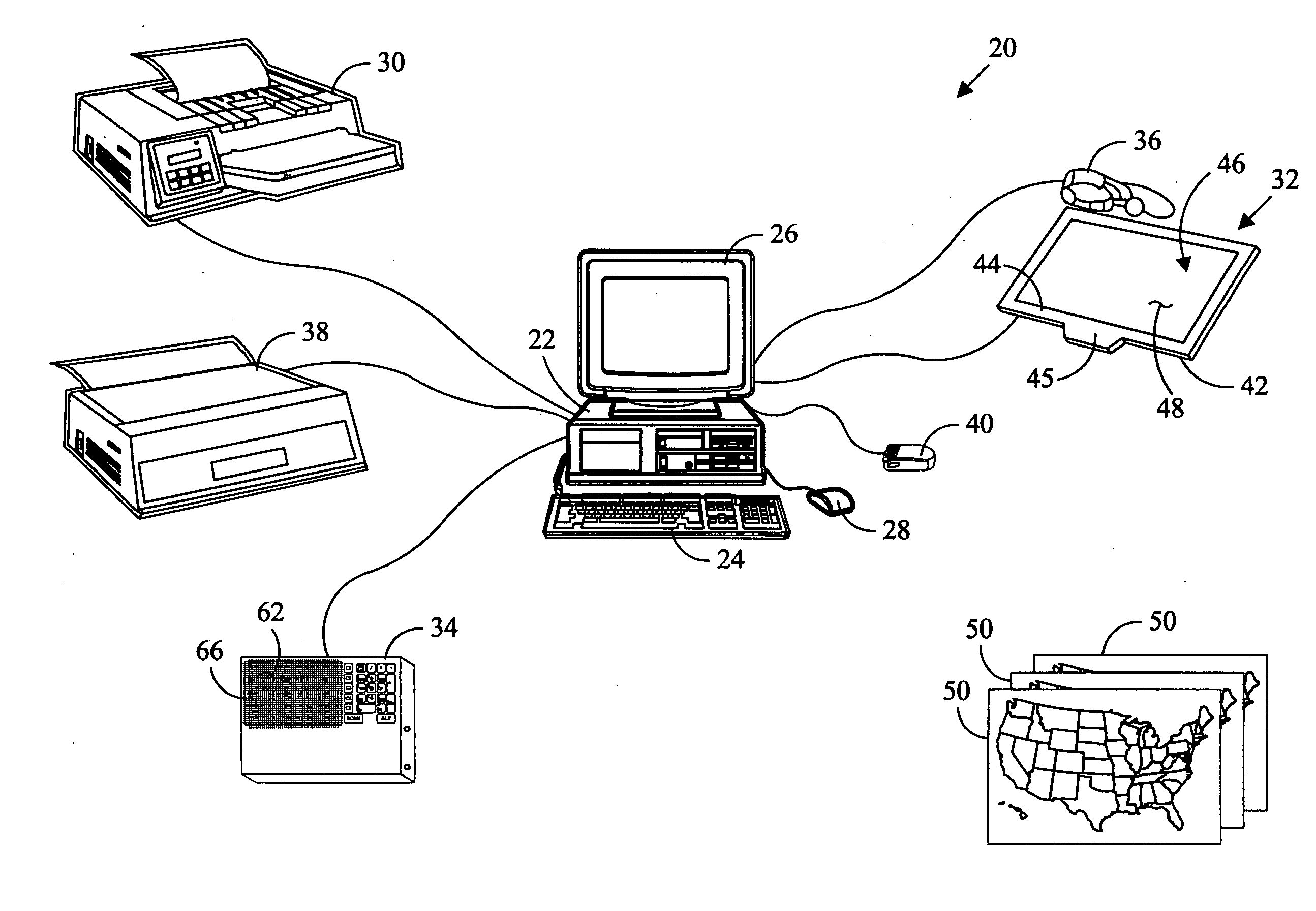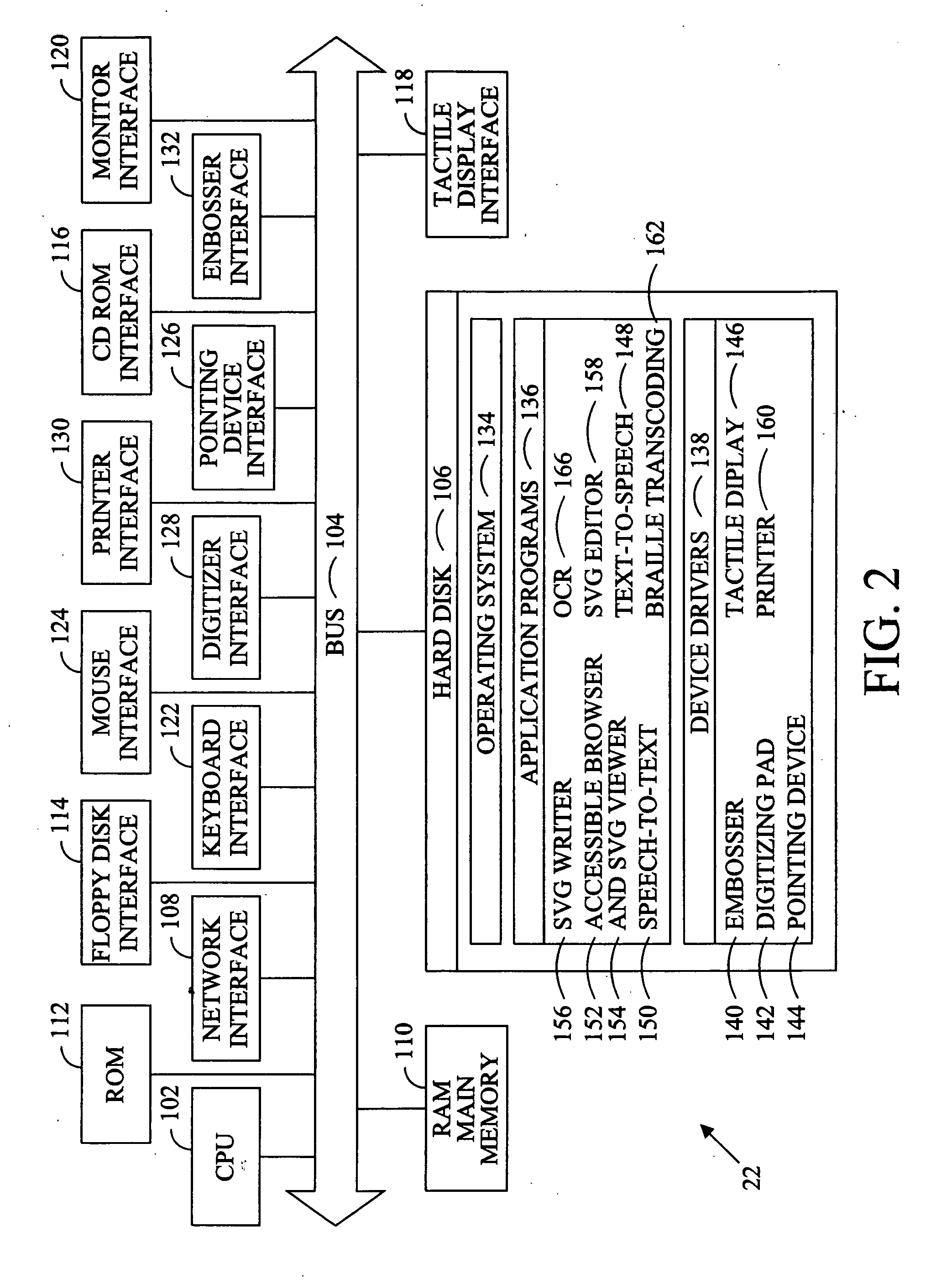Accessible computer system
- Summary
- Abstract
- Description
- Claims
- Application Information
AI Technical Summary
Problems solved by technology
Method used
Image
Examples
Embodiment Construction
[0023] Interpretation, understanding, and interaction with web pages and other electronic documents comprising text and graphic elements are continuing problems for the visually impaired. Referring in detail to the drawings where similar parts of the invention are identified by like reference numerals, and, more particularly to FIGS. 1 and 2, the interactive audio-tactile system 20 provides an apparatus and method for presenting web pages and other documents to a visually impaired computer user. The interactive audio-tactile system 20 permits a visually impaired user to navigate between and within documents; presents documents, or portions of documents, in a fashion intelligible to a visually impaired user; and preserves the original document structure permitting the user to interact with the document.
[0024] The interactive audio-tactile system 20 comprises a host computer 22 that may include a number of devices common to personal computers, including a keyboard 24, a video monitor...
PUM
 Login to View More
Login to View More Abstract
Description
Claims
Application Information
 Login to View More
Login to View More - R&D
- Intellectual Property
- Life Sciences
- Materials
- Tech Scout
- Unparalleled Data Quality
- Higher Quality Content
- 60% Fewer Hallucinations
Browse by: Latest US Patents, China's latest patents, Technical Efficacy Thesaurus, Application Domain, Technology Topic, Popular Technical Reports.
© 2025 PatSnap. All rights reserved.Legal|Privacy policy|Modern Slavery Act Transparency Statement|Sitemap|About US| Contact US: help@patsnap.com



